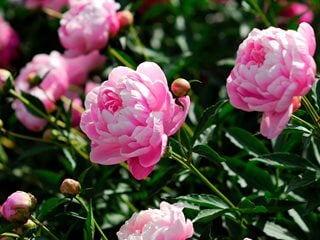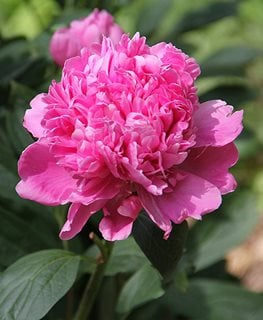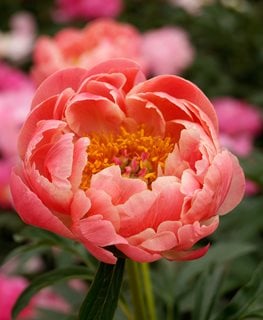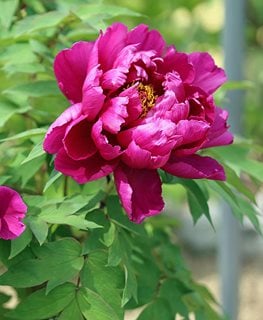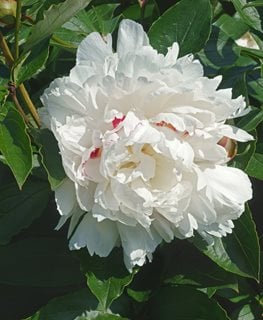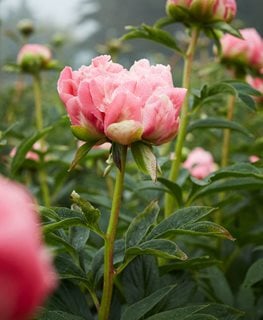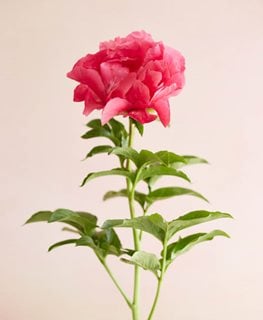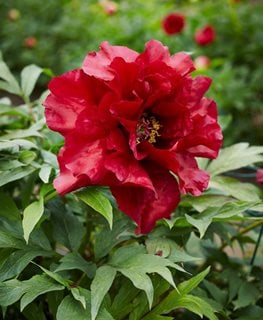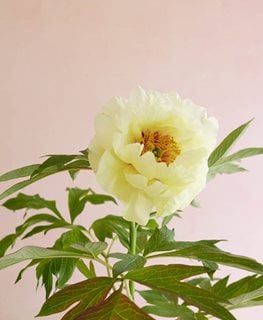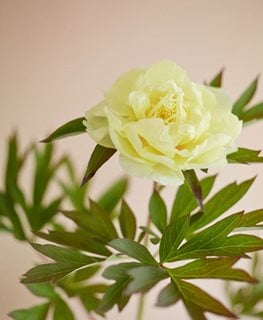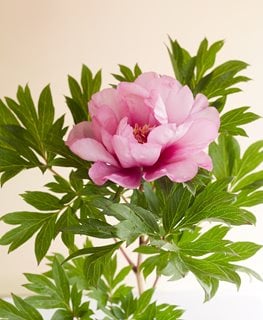How to Grow & Care for Peony Flowers
Learn how to grow beautiful peony bushes with advice from the pros Updated: 2/2/2022Peony plants offer big, fluffy, fragrant flowers in a wide range of colors, forms and sizes. These resilient, long-lived (some to 100 years) perennial bushes have a history of popularity as a garden plant.
On this page: Basics | Planting | Care & Pruning | Pictures | Design Ideas | Weddings & Floral
On this page:
- BASICS
- HOW TO PLANT PEONIES
- PEONY CARE AND PRUNING
- PEONY PICTURES
- DESIGN IDEAS
- WEDDINGS & FLORAL ARRANGEMENTS
BASICS
Zones:
Zones 2 to 8, depending on variety.
Types:
There are three types of peonies: tree, Itoh (intersectional), and herbaceous (bush). Compare them in detail here: Types of Peonies.
Height/Spread:
Tree peonies can reach 4 to 7 feet tall and 4 to 5 feet wide. Itoh and herbaceous varieties grow 1 to 3 feet tall and wide.
Sun or shade?
Full sun; but tree peonies prefer light shade in midday heat.
When do peonies bloom?
In most locations, flowers will bloom in April, May or June. Expect tree peonies to bloom first (around Mother’s Day), followed by herbaceous varieties (around Memorial Day) and then the intersectionals. Include all three types in the garden to enjoy blooms for up to seven weeks.
Flower colors:
There are white, pink, red, coral, maroon, and yellow blooming varieties. Many change color as they open, so check them daily to see the differences.
Fragrance:
Many peony flowers are fragrant, some are sweet, some citrusy, and others slightly spicy.
Pests and diseases:
Japanese beetles can be a problem for peony plants. They are also susceptible to botrytis blight and powdery mildew. Good air circulation around your plants can help prevent this. Learn more about issues that can arise in the Missouri Botanical Garden's guide to peony problems.
Do deer eat peonies?
Fortunately, they are deer and rabbit resistant.
HOW TO PLANT PEONIES
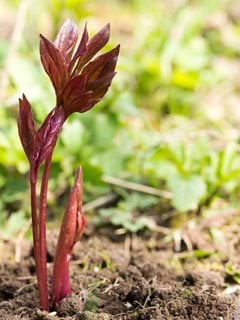
If planted well, herbaceous peonies will happily send up new shoots each spring for decades. Photo by: gutaper / 123RF.
When to plant peonies:
Bare root peonies are best planted in the fall (prior to the first frost) and they'll have the best chance of blooming the following spring. Those planted in spring may not bloom for two years or more.
Where to plant peonies:
Peony plants need a location with 6 to 8 hours of sunlight a day, good drainage, and plenty of room. Picking the right spot is essential for success. Established plants have deep roots that make transplanting difficult or even impossible.
Tip: The experts from the University of Michigan’s Peony Garden at the Nichols Arboretum recommend planting them far away from large trees and shrubs as they do not like to have root competition.
How deep to plant a peony:
The depth at which you plant your peony will depend on the type and your climate.
- Herbaceous: Position these with their “eyes” (next year’s buds) ½ inch (in warmer zones) to 2 inches (in cooler zones) below the soil surface.
- Tree: Plant deeper than herbaceous types. Experts suggest digging a hole 2 feet deep and 1 foot wide and amend the backfill with organic matter. Position with the graft 4 to 6 inches below ground level, so that the “nurse” herbaceous peony rootstock will die away.
- Intersectional: Plant just below the soil surface, 1/2 inch deep in warm zones, 1.5 inches in cooler zones.
What type of soil is best for peonies?
Some gardeners have success growing them in their native soil, but most experts recommend that you amend the soil with organic matter before planting. Also, ensure they are in well-draining soil, as they won't do well with soggy roots.
Growing peonies in pots:
While happiest in the garden, peonies can be grown in pots if given the proper attention.
- Select a large container with plenty of drainage holes.
- In colder areas, bring potted plants in for the winter to protect them from freezing temperatures.
- Water more frequently during the growing season, as containers dry out quickly.
PEONY CARE & PRUNING

Herbaceous and intersectional types should be cut back in the fall. Photo by: photowind / Shutterstock.
Should I prune my peony?
Unlike roses, peony bushes do not require precise pruning to thrive. Often pruning is only necessary in the event of damage or disease.
- Herbaceous peonies: At the end of the growing season, cut your herbaceous peonies all the way to the ground.
- Intersectional peonies: Cut back at the end of the growing season, leaving 4 to 6 inches of stem.
- Tree peonies: After five years, remove suckers from the center of the shrub to thin out growth and promote better air circulation—a dense snarl of branches can lead to doom. Do not cut back until they are well established—they are slow growing, so every inch is precious. Pruning during the first two to three years will hinder their progress and slight you on next year’s display. Take care not to cut the woody stems because they bloom on old wood.
YouTube Short by Lindy @smalltowngardenlife
How often should I water my peony?
They are not overly thirsty plants—in fact, overwatering can lead to problems. Give your peony bush excellent drainage and begin watering in spring if you go more than two weeks without rain. Then, provide weekly, deep watering throughout the dry summer months (one inch at each watering). Continue watering after flowering to ensure vigorous plants the following year. There is no need to water once they have gone dormant.
How do you debud peonies?
If you want large flowers, remove the side-buds that develop near the base of each terminal bud. However, if you want to prolong the blooming season, leave the side-buds alone—they will bloom later than the terminal buds.
Can I divide my peony?
Peonies do not need regular division for successful blooming. However, if you’d like to have more, you can divide your mature plants as a form of propagation. The best time for dividing is in the fall when the plant is nearing dormancy. Peony roots cut into pieces with 3-5 eyes have the best chance of success. Learn more about dividing peonies.
Do peonies require complex staking?
Many should be staked to support heavy blooms, especially if you live in a rainy climate. Herbaceous varieties can be supported with a peony ring, while tree peonies are more suited for the use of bamboo stakes and natural twine. If this sounds like too much hassle, there are many varieties that feature strong stems that don’t require staking.
Should I mulch?
In very cold climates, they may benefit from a loose winter mulching with organic matter such as pine needles or shredded bark. Keep mulch a few inches away from the base of the plant. Remove the mulch in early spring to allow new growth at the soil surface. For tree peonies especially, winter protection with burlap and a 3 to 4 inch layer of mulch (pulled aside in the spring) is wise in Zone 4 and colder parts of Zone 5.
Why didn't my peony bloom?
Many gardeners have difficulty understanding why their peonies don’t bloom. Here are the most common reasons:
- They are planted too deeply
- There isn’t enough sunlight
- Your soil is heavy on nitrogen
- The plants are still young
Why are ants on my peonies?
Peony buds secrete a sweet nectar that attracts ants. The ants do not hurt the plant and they aren’t required for the blooms to open. Plus, ants will help protect the buds from other flower-eating insects. If cutting flowers to take indoors, gently rinse the blossoms in a bucket of water to get rid of the ants.
Why are my peony leaves curling?
When a peony's leaves curl it is a sign of stress. This can be caused by lack of water, a virus, or unusual weather conditions. Many plants recover from leaf curl if the issue is corrected and go on to bloom normally.
Now that you've mastered growing peonies, sign up for our newsletter for weekly gardening tips, design inspiration, and more!
PICTURES
LANDSCAPE DESIGN TIPS
- Plant them in mixed borders for added substance and color
- Use as a low, informal hedge
- Plant alongside Shasta daisies, flax, and bearded iris
- Flank a walkway or steps with dwarf tree peonies or herbaceous peonies
- They also make excellent cut flowers
WEDDING & FLORAL ARRANGEMENTS
Peonies are one of the most popular cut flowers. They make an excellent choice for bridal bouquets and centerpieces, as well as everyday arrangements. If you aren’t able to grow your own, the best selection of cut peonies is usually available between April and June. They look great by themselves or when combined with roses, wildflowers, ferns, protea, eucalyptus and more.
If you’re looking to have a peony arrangement delivered to a loved one, check out the selection from The Bouqs Co. that offers farm-fresh flowers nationwide. They also have gorgeous wedding flower packages at reasonable prices.
RELATED:
20 Fragrant Flowering Plants
Peony and Rose Bouquets
18 Spring Flowers
Ranunculus
21 Low-Maintenance Plants
